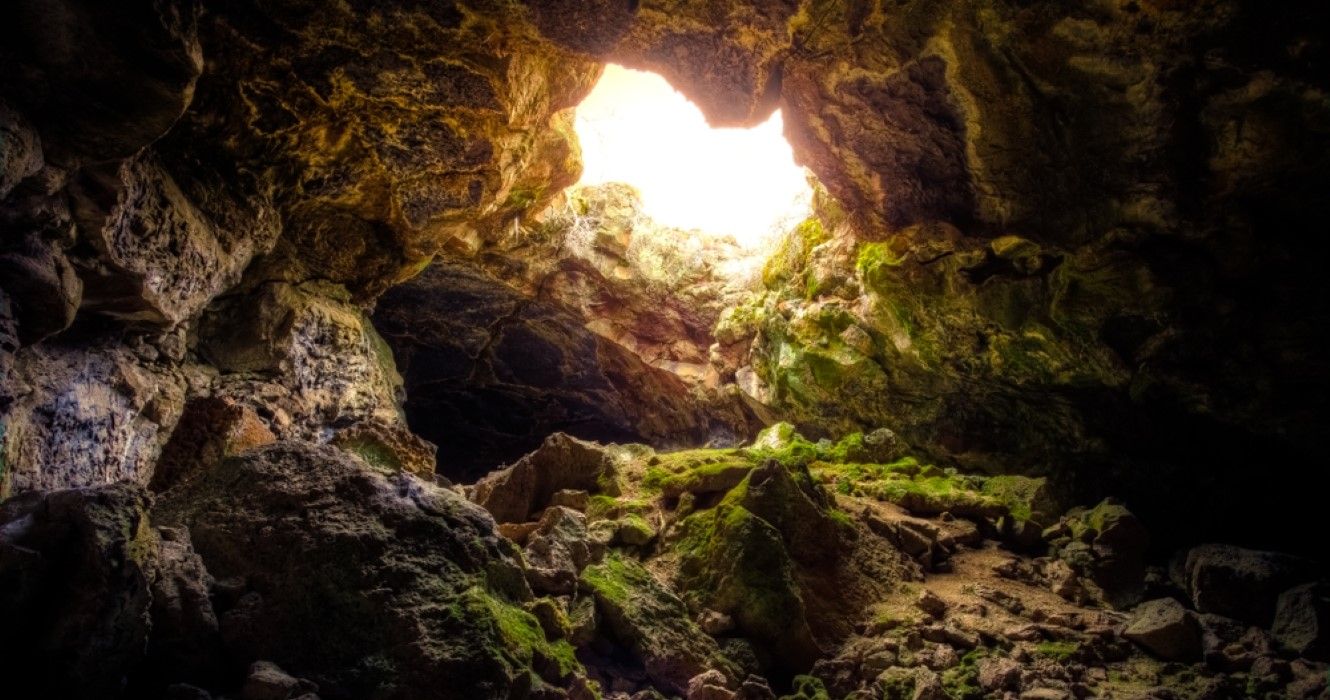Quick Links
Several states in the western U.S., along with Hawaii, are home to lava beds and lava caves, also called tubes, which can be explored on foot by those curious about the mysterious happenings inside volcanic eruptions that occurred tens of thousands, and in some cases millions, of years ago.
Most can be found in Arizona, New Mexico, and Utah, and at multiple locations in California, including in the vast Mojave Desert, but the motherlode of lava tubes can be found in one place, Lava Beds National Monument, in Tulelake, California, not far from the Oregon border.
The federal government maintains control over major lava bed parks for safety and ecological reasons, either through the National Park Service, the National Park Foundation, or the USDA Forest Service. Some of the parks require visitors to obtain free permits before setting out on their cave explorations.
At Lava Beds National Monument, there are hundreds of lava tube caves that were formed over the course of the last 500,000 years.
Lava Beds National Monument Has An Abundance Of Tubes
Situated on the north side of the Medicine Lake volcano in northeastern California, Lava Beds National Monument has 500 known lava tube caves, the most in North America. There are roughly 18 that are fully accessible and open to the public, and the National Park Service categorizes them in terms of difficulty to access.
Eight caves are listed as least challenging, and five each as moderately and most challenging. Because of the sheer abundance of tubes located at Lava Beds National Monument, visitors are able to choose the best ones to explore based on their ability to navigate through this kind of natural terrain.
For example, Mushpot Cave is labeled least challenging. It's located near the monument's visitor center and is paved and lighted. Another least challenging tube is called Valentine Cave, which the National Park Service describes as having smooth and organic-looking walls.
Moderately challenging tubes, such as Golden Dome and Indian Well, will have sections of low ceilings and rough surfaces and might require special safety gear. The most challenging tubes, including those named Juniper and Thunderbolt, will require visitors to crawl under low ceilings and navigate confusing passages. Advance planning and safety gear are required in these explorations.
Entry Fees And How To Get To Lava Beds National Monument
Lava Beds National Monument is located at 1 Indian Well HQ, Tulelake, CA. It's roughly 30 miles south of the state's border with Oregon. The caves are open year-round, and there is a visitor center with restrooms.
Traveling from California's I-5 freeway, take U.S. 97 North at Weed towards Klamath Falls. Turn right onto California Hwy 161, also known as Stateline Road. Travel east on 161 through the Lower Klamath National Wildlife Refuge to Hill Road. Turn right on Hill Road at the golf course. Travel south on Hill Road nine miles to enter Lava Beds National Monument.
The monument charges entry fees as follows: $25 per vehicle; $15 for those arriving by bicycle, on foot or on horseback; and $20 for motorcycles. Children under 16 years of age are admitted free, as are holders of annual or lifetime National Park Service passes. All passes may be obtained at the monument, and only cash is accepted. Reservations are not required for lava cave entry.
Unfamiliar With Lava Tubes? Here's The Skinny
The science behind the formation of lava caves is complicated, so here's a simplified explanation. Step back a half-million years and imagine a violent volcanic eruption that spewed hot lava into the atmosphere and down the sides of a volcano's cone. Eventually, the upper layer of lava began to cool and solidify as it flowed across the land, but molten lava was still streaming underneath, the way that a brook or a river still flows while its top layer is frozen in winter.
Once the eruption flow ended, and over time, hollow tubes, or caves, formed under the layers of volcanic rock. Some are just a few feet high and several feet long, while others have high ceilings and continue for miles. But that doesn't mean that the longer tunnels are fully accessible since the roofs of most lava tubes tend to collapse, blocking off the way forward.
Here Are More Locations Where You Can Explore Lava Tubes
In northern California, east of Redding, Subway Cave Lava Tubes is located in Old Station, CA, and operated by the USDA Forest Service. This location has just one lava tube to explore, and free guided tours are offered in the summer. Admission is free. It's about one-third of a mile long, and there is no lighting, so bring a flashlight. Hard-soled shoes are recommended since the floor of the cave is jagged. Like other caves, it's chilly inside, so jackets are advised. There is no official address, but it is located on Highway 89, just north of the Highway 44/89 junction in Old Station.
Mohave Desert Lava Tube, in the Mohave National Preserve, also has only one lava tube, and it has a low ceiling. It can be a challenge to find the cave. It is located off Kelbacker Road, which is unsigned. From Interstate 15, travel about 20 miles south of Baker, California, and turn left onto Kelbaker Road. There are no restrooms. Admission is free.
Hawaii Volcanoes National Park, on the Big Island of Hawaii, has multiple lava tubes, with the most popular being one called Nahuku. Its location is on the Kilauea Crater and is estimated to be 500 years old. It is prone to rock falls, has low ceilings, and often has standing water inside. However, it has electric lighting and a ceiling height of around 20 feet in some places. Visitors can walk for about 600 feet inside the tube. Traveling from Hilo, it's a 45-minute drive southwest on Highway 11.
Admission costs for seven days' entry are $30 per vehicle, $25 per motorcycle, and $15 per pedestrian or bicycle.

